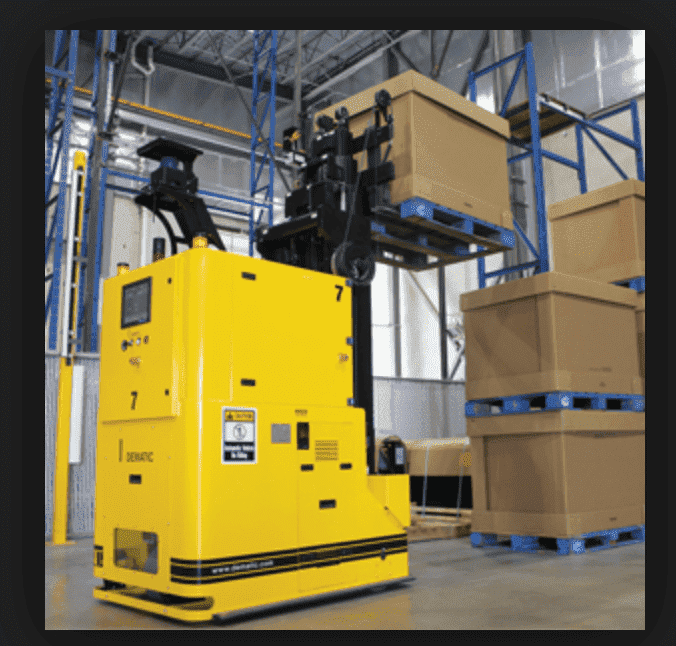
Technology: Incorporating Safety into AGV Pallet Drop Operations
The manufacturing and material handling industries are abuzz about the robot revolution. Automatic guided vehicles’ (AGVs) role in the supply chain and material handling has been increasing, and they are increasingly working side by side with humans in facilities like warehouses and distribution centers.
These vehicles, like driverless lift and forktrucks to material moving robots, get integrated into the facility infrastructure and operational processes. AGVs use technology to move throughout the facility - most often using Proximity Laser Scanners and Laser Scanner Interface technologies. These technologies help the AGVs determine objects and locations in the facility, as well as integrate with other facility machinery and equipment.
AGVs are programmed to follow a guidepath - in distribution centers and warehouses, they often move pallets and containers of material from one place to another. With no driver, the machines are being told where to load and unload the materials being moved, often through the use of PLS technology.
The rise of AGVs is allowing material handling systems to grow in size; today’s facilities are much bigger and taller. Warehouses and distribution centers today employ both persons and machines to get the work done more efficiently.
ANSI B56.5 outlines safety standards for the use of AGVs in an industrial facility, but it primarily looks at the space required for the vehicles, load stability, sound requirements and emergency controls for stopping the vehicle. Because the vehicles are driverless, the standards do not look at safety of the workers interacting with vehicles outside of emergency stops and sensors to keep from running into people at ground level.
Even with the AGVs, there is a need to keep the persons working with and around the AGVs safe. It’s still very important to guard areas that material is being passed into...there are also fall protection regulations from OSHA and ANSI that mandate workers are kept safe in these pallet drop areas - especially upper levels of over 48 inches. Dual-gate systems like our line of pallet drop safety gates are needed to keep workers safe.
Many material handling operations place people in the elevated workstation in which the AGVs are loading and unloading material in pallet drop areas that are two or three stories tall. This scenario is very common and requires fall protection for workers that are working the pallet in these drop areas.
We have worked with many companies that use AGVs in their facilities to integrate the important safety systems into their workflow. To be most efficient and keep operations proficient, is important that the AGV can interact with the pallet drop safety gates. Because they are unmanned, the AGVs need a way to understand if the pallet area is available for unloading and loading material without relying on an employee to perform any extra steps.
Next week we'll outline a job that we did with our Roly safety gate for an operation that uses AGVs.